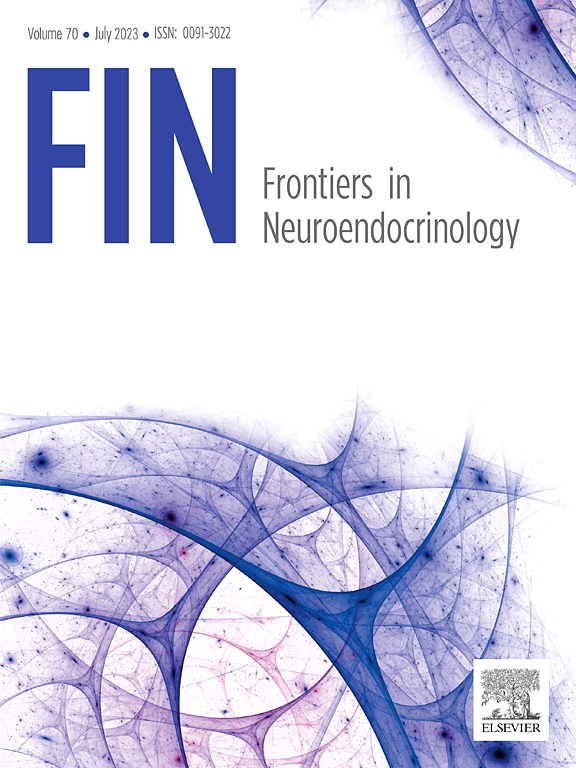毛发皮质醇浓度的季节变化:一项系统综述。
IF 6.7
1区 医学
Q1 ENDOCRINOLOGY & METABOLISM
引用次数: 0
摘要
毛发皮质醇浓度(Hair cortisol concentration, HCC)是精神神经内分泌学研究中重要的生物标志物,为下丘脑-垂体-肾上腺轴的长期活动提供了独特的见解。季节反复显示与HCC相关。然而,到目前为止,还没有系统地尝试量化季节对HCC的影响。我们对文献数据库PubMed和PsycINFO进行了系统的检索。29项人与人之间和人内研究符合所有资格标准(N = 10,520名参与者)。总体而言,22项研究(76% %)报告了不同季节HCC的显著差异。大多数人间研究报告,冬季/春季的HCC低于夏季/秋季(11/15)。这一模式得到2/14个人研究的支持,而其他研究报告春季或夏季的HCC低于秋季(6/14)。其余的研究报告了HCC的其他模式或无季节性变化。总之,有越来越多的证据表明HCC的季节变化,强调在未来的HCC和健康研究中需要考虑季节。与气象、生态、社会文化和生活方式因素相关的机制可能是头发中皮质醇分泌和积累的季节性节律的基础。本文章由计算机程序翻译,如有差异,请以英文原文为准。
Seasonal variation in hair cortisol concentration: A systematic review
Hair cortisol concentration (HCC) is a crucial biomarker in psychoneuroendocrinological research, offering unique insights into long-term hypothalamic–pituitary–adrenal axis activity. Season has repeatedly shown associations with HCC. However, as of yet, no systematic attempt at quantifying season’s influence on HCC has been undertaken. We conducted a systematic search of the bibliographic databases PubMed and PsycINFO. Twenty-nine between- and within-person studies fulfilled all eligibility criteria (N = 10,520 participants in total). Overall, 22 studies (76%) reported significant differences in HCC across seasons. Most between-person studies reported lower HCC in winter/spring than in summer/autumn (10/15). This pattern was supported by 2/14 within-person studies, whereas others reported lower HCC in summer than in autumn (6/14). The remaining studies reported other patterns or no seasonal variations in HCC. In conclusion, there is accumulating evidence for seasonal variations in HCC, highlighting the need to consider the seasons in future research on HCC and health. Mechanisms related to meteorological, ecological, sociocultural, and lifestyle factors may underlie seasonal rhythmicity in cortisol secretion and accumulation in hair.
求助全文
通过发布文献求助,成功后即可免费获取论文全文。
去求助
来源期刊

Frontiers in Neuroendocrinology
医学-内分泌学与代谢
CiteScore
13.30
自引率
6.80%
发文量
62
审稿时长
68 days
期刊介绍:
Frontiers in Neuroendocrinology (FIN) publishes a wide range of informative articles including comprehensive reviews, systematic reviews, opinion pieces, and meta-analyses. While the majority of reviews are invited, we also embrace unsolicited reviews and meta-analyses, as well as proposals for thematic special issues, provided they meet our rigorous quality standards. In addition, we encourage authors to submit commentaries that concisely present fresh ideas or offer further analysis to delve deeper into the implications of an article published in our journal.
 求助内容:
求助内容: 应助结果提醒方式:
应助结果提醒方式:


